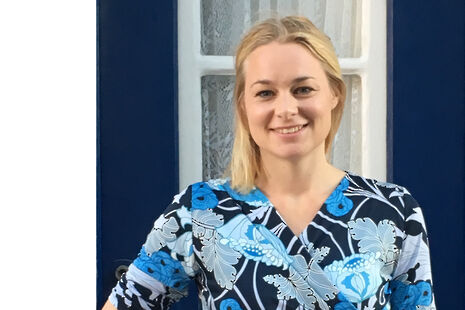The Cambridge researchers looking at suicide
A team of researchers at the University of Cambridge is trying to understand what makes adolescents want to commit suicide – and why some show remarkable resilience despite living in difficult circumstances

Content note: discussion of adolescent suicide
One in four people experience the isolating and traumatic effects of mental health disorders. Around 75% of adult mental health problems begin before the age of 18. This can harm education and social interactions, leading to long-term adverse effects in relationships and future job opportunities. In some cases, it can cost lives: around 16% of young people have considered suicide, with 8% attempting it at least once. Yet, surprisingly little is known regarding the brain mechanisms and environmental factors that cause mental health problems in teenagers.
With the aim to combine current understanding of mental health with cutting-edge science is the HOPES (Help Overcome and Prevent the Emergence of Suicide) project, funded through a Brighter Futures Grant from MQ, led by Dr Anne-Laura van Harmelen of Cambridge’s Department of Psychiatry and Lucy Cavendish College. The project, which started this September, is a large collaboration between research institutions across the world and looks at predicting what makes adolescents vulnerable to attempting suicide – and, conversely, what allows them to be resilient.
“This research is trying to work out how the pieces of the puzzle fit together,” says van Harmelen. Brain scans from around 4000 young people, aged 14 to 24 years, as well as information on social and environmental circumstances are pieced together to create a full picture of those factors, both inside and outside the body, that might lead to someone making an attempt on their life.
“We know there are lots of social, emotional and behavioural factors that help to build resilience – but which are the most important?”
Such a large sample size allows for complex statistical analyses which had not previously been possible. At present, HOPES looks at certain factors known to exist within the population, such as bullying, to examine how these are related to brain-based vulnerability regarding attempted suicide. The next step would be to look at whether these vulnerability indicators are able to predict certain behaviours in groups of people over time. Ultimately, the researchers aim to be following people over a span of several years, monitoring changes in their brain and social environment. “We are diving deeper into the factors and mechanisms that might help,” says van Harmelen. “We know there are lots of social, emotional and behavioural factors that help to build resilience, and that these factors are amenable to intervention by therapists – but which are the most important, or is it a specific combination of these factors?
The nature of mental health and its uniqueness to individuals means that aspects of the research are not without their challenges. Reaching out to and scanning the brains of adolescents who are having suicidal thoughts is difficult, making the collaborations within the project extremely valuable.
The complex nature of mental health problems means that it is also difficult to make progress without looking at a wide variety of factors. Van Harmelen emphasizes that the concept of resilience – when a person fares better than expected in the face of stressors – is especially difficult to define. Resilience functioning is dynamic and can vary within individuals depending on the situation with many different factors facilitating resilient responses. From genetic phenotypes, to hormonal stress responses, to whether or not the person has had enough sleep, the combination of factors such as these make it impossible to determine resilience and vulnerability simply from a brain scan, another reason why HOPES focuses on the range of factors at the heart of these issues.
Research of this kind is not new: psychologists have been studying suicidal behaviours for over fifty years. However, most of this research has focused on adults. The HOPES project takes a novel approach by investigating suicide and mental health in the adolescent brain. Adolescence is known to be a turbulent period in brain development, in which many begin to show symptoms of mental health problems. A marked rise in attempted suicides, particularly in young males, and the worrying percentage of adolescents considering taking their own lives makes the HOPES project particularly timely. “The collaborative nature of the project provides us with the largest dataset on adolescent suicidality to date,” says van Harmelen. “It is a really important developmental time.”
Although the project is relatively new, it is optimistic for its future impact. “Any better understanding of what makes you vulnerable to suicidality would be a massive milestone,” says van Harmelen. A better understanding and ability to predict suicidal behaviours could lead to better intervention and, with hope, a long term reduction in suicidal behaviours in adolescents.
 News / Cambridge academics stand out in King’s 2026 Honours List2 January 2026
News / Cambridge academics stand out in King’s 2026 Honours List2 January 2026 Comment / Plastic pubs: the problem with Cambridge alehouses 5 January 2026
Comment / Plastic pubs: the problem with Cambridge alehouses 5 January 2026 News / Cambridge businesses concerned infrastructure delays will hurt growth5 January 2026
News / Cambridge businesses concerned infrastructure delays will hurt growth5 January 2026 News / AstraZeneca sues for £32 million over faulty construction at Cambridge Campus31 December 2025
News / AstraZeneca sues for £32 million over faulty construction at Cambridge Campus31 December 2025 Interviews / You don’t need to peak at Cambridge, says Robin Harding31 December 2025
Interviews / You don’t need to peak at Cambridge, says Robin Harding31 December 2025









